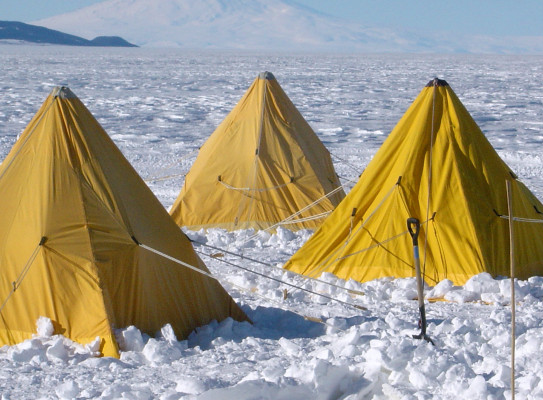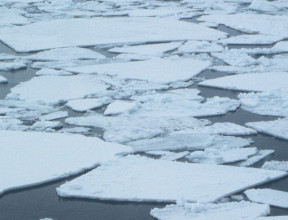
Ice dynamics

Our ever-improving understanding of ice sheet dynamics is helping us make better sea level rise predictions under different climate change scenarios.
The Antarctic ice sheets
The Antarctic ice sheets sits on continental bedrock. They have an average thickness of two kilometres and covers an area of nearly 14 million square kilometres.
The ice flows slowly from high areas to low area. When it reaches the ocean, it flows out onto the ocean, forming a floating shelf of ice shelf. Antarctica’s Ross Ice Shelf is the biggest ice shelf in the world. It is 500,809 square kilometres and can be 750 m thick in places.
Ice shelves like the Ross Ice Shelf have a crucial function in maintaining the Antarctic ice sheets. Together, the ice shelves work together to slow down the dynamic flow of ice under gravity into the ocean.
Climate changes everything
Ice shelves around Antarctica are melting and thinning because the ocean is warming. The ice shelf thins and pieces of it break off, a process called calving. Ocean warming isn’t unform, leading some areas to be impacted more than others.
Once the ice shelves are gone, there’s nothing to stop the rest of the ice sheets from sliding into the ocean. This was seen on a local scale when the Larsen Ice Shelf started to break up in the mid-1990s. Large collapses of sections of the shelf correlate with a tenfold increase in the movement of the glaciers feeding that section of the shelf.
Possible outcomes
Even gradual warming could result in a tipping point where ice shelves become unstable and start to break up, setting in motion feedback processes that further increase melting and trigger unstoppable sea-level rise for centuries to come.
Such a rise would not be experienced equally around the planet. Since polar ice masses exert a gravitational influence on the waters around them, nearby seas would actually fall because there would be less pull from as the mass reduces. But sea levels would rise dramatically in other places around the globe, with major consequences for cities like New York and Shanghai.
It is an urgent priority for scientists to estimate the rate at which the Antarctic ice sheet will melt over the coming decades and centuries and to predict the possible outcome of ice sheet melt. Predictions can be made using modelling activities and by drilling into Antarctica to look for clues as to what can be expected in a warmer earth.


